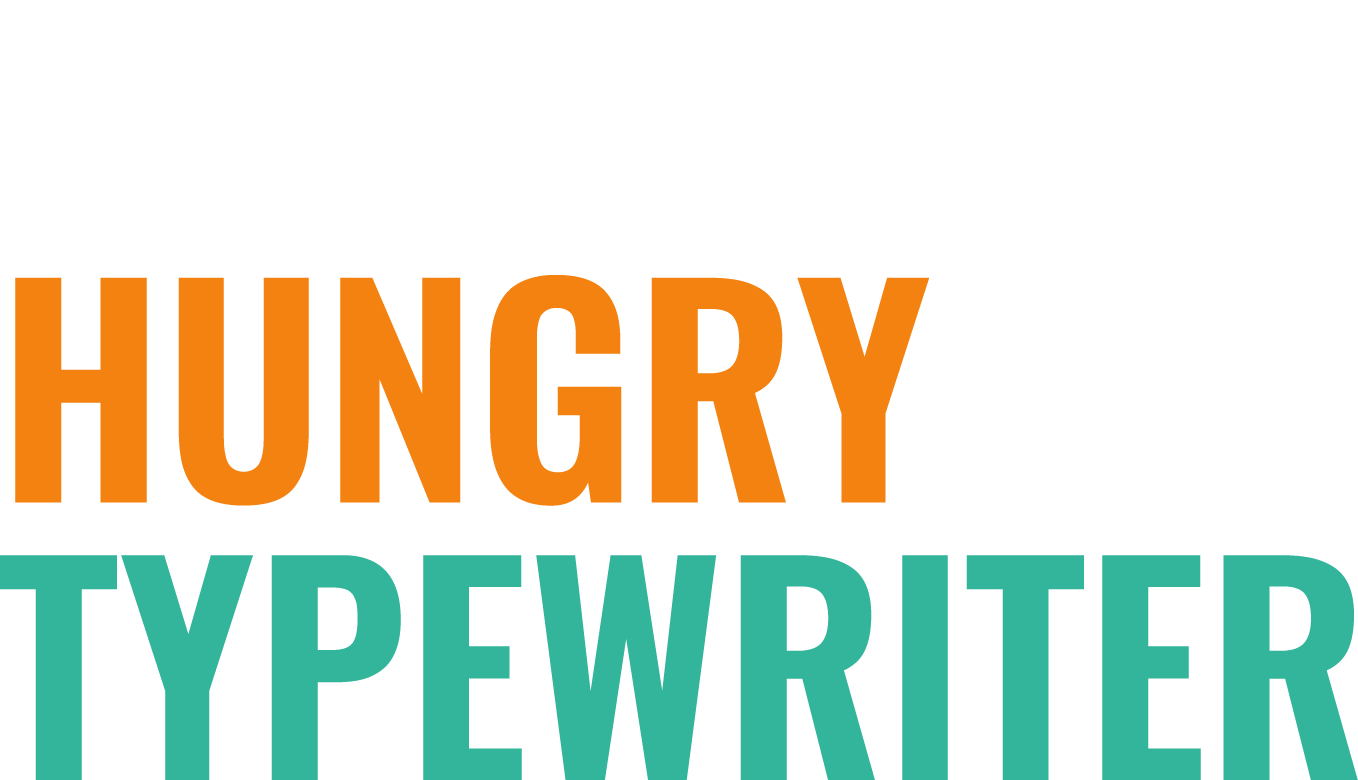Quarter for Your Thoughts: 25 Questions to Spark Small Business Content Ideas
A small business copywriter can spin content gold from your two cents. Here’s how to give us enough to work with.
Every quarter, my team and I sit down with our monthly content retainer clients to look at the road ahead. And in over 15 years of writing blogs and newsletters for small businesses, I’ve learned that nothing brings silence to a Zoom call faster than asking the question:
“So… what do you want to write about this month?”
Seriously. Crickets have more to say.
And it’s easy to see why. With so many directions to go, most small business owners don’t know what to write about or how (and where) great content can help them throughout their business and sales cycles.
But as magical as we small business copywriters can be, we’re not mind readers—and we’re not always experts in your niche. And that’s okay—it’s often better that we’re not. You may not have known this when you hired us, but you’re not just getting a fresh draft—you’re getting a fresh perspective.
That’s why I don’t have to read your mind to create compelling content. I just have to ask the right questions.
A Better Way to Brainstorm Small Business Content Ideas
We’ve come up with 25 questions that are designed to give your content some juice and your confidence a boost.
Once you start answering these, you’ll see how easily they can spark small business content ideas that…
Spot content gaps in your funnel or client experience.
Reveal powerful ideas from real conversations you're already having.
Strengthen and share advice you give all the time.
Use content to support big-picture goals (or solve industrial-strength problems).
Case in point: I'm writing this blog to support Hungry Typewriter's amazing retainer clients (thanks for diving in, partner!). But this content is just as helpful if you’re exploring Copy Coaching or considering hiring a small business writer for the first time.
This blog isn’t just a resource for better content, it’s a peek behind the curtain at all that goes into ridiculously good writing. Good. Stuff. All. Around.
Quick tip for HT clients: Don’t feel like you have to go deep on every answer. A few bullet points. A voice note. A sticky note with your chicken scratch. Speak plainly, like you would to a client.
Your insights are the ingredients. We're the chef. And your audience is hungry.
Let's bring them something delicious.
TL;DR
You are a critical part of any great draft. You bring your business DNA—what makes you unique, special, valuable to your clients—and we bring the chromosomal complement on the copy side.
The result? One fantastic word baby.
5 Awareness & Discovery Questions That Meet Them Where They Are
This is a powerful place to start when you’re trying to grow your audience or understand them better. You don’t have to chase as hard—or run as far—when you meet people where they already are.
That said, every audience speaks its own language when describing their problems. They often don’t know that you exist—or that the pain they want to fix is actually just a symptom of a deeper issue. They just want answers and a way forward.
Here’s why these questions matter:
They help you focus on the before stage: what your audience knows, thinks, or feels before they discover you.
They’re based on your prospect’s logic and language, not your service or solution (yet).
They reveal curiosity, pain points, or confusion—without jumping ahead to the pitch.
They remind us that not every post should be selling something. Sometimes, the goal is to build connection and credibility simply by showing you get it.
Awareness prompts are also perfect for enhancing SEO or improving visibility in your field, especially if your approach is still under the radar (for now).
Here’s my favorite for this:
→ What do people Google before they find you?
Think about how your audience describes their pain or goal—not how they would describe your offer. Are they searching for a how-to solution? A term? A service or partner? Proof that they aren’t alone?
Hint: If you don’t know how to answer this, add this question to your introductory or discovery calls. This can be far more insightful than “How did you hear about us?”
OTHER GREAT AWARENESS-BUILDING QUESTIONS:
What does your audience think they need to fix? Are they right or just repeating what they’ve been told?
What solutions have they already tried? What did they learn in that process?
What’s something a new lead almost always gets wrong or misunderstands?
What are some early signs someone is experiencing the problem you solve—even if they haven’t named it yet?
Awareness content does two things: It reveals how people think, search, and understand their problem—and it demonstrates how tuned in you are to their needs as they see them.
TL;DR
Awareness content uses their words as much as yours. Listen for phrases you hear in real life or on sales calls—they’re telling you what they need to hear (and what your content needs to say).
Discover why it’s time to ditch “How did you hear about us?”—and what smarter questions other business owners are asking instead. Join the LinkedIn conversation here.
5 Messaging & Positioning Questions That Hit Where It Counts
You want your audience to know exactly who you are, how you’re different, and why that matters—and your small business blog is the perfect place to showcase that perspective.
To do this well, you have to be both loud and clear. If you are getting stronger on brand voice or are eager to stand out from everyone else who “sorta does the same thing,” these questions help you pull in your language, stories, and stances from the real-world conversations you’re already having and the problems you love solving.
Start with this one:
→ What do you say on a sales call that makes people go, “Whoa, I’ve never thought of it that way”?
This is your magic perspective—the phrase or concept that flips a light switch for your audience. If it’s persuasive in conversation, it’ll be powerful in content, too.
OTHER GREAT POSITIONING QUESTIONS:
What objections or hesitations do you hear most often?
How do your best-fit clients describe what you’ve done for them?
What phrases or language do you want your audience to associate with you?
What makes your approach different from someone in a similar space?
Messaging content works best when it’s grounded in your beliefs—not just your bios. Your job here isn’t to “market.” It’s to show what you see—and why it matters.
TL;DR
When you lead from a place of passionate purpose, the right people will lean in.
Don’t tell them what they want to hear. Tell them what they need to know.
5 Sales & Conversion Questions That Will Help Pay the Bills
If people are circling your offers but not saying yes, the right content can reduce friction, build trust, and nudge them closer to the finish line. These questions are designed to uncover the moments where clarity, credibility, or curiosity could help seal the deal.
Sales content isn’t always about pressure—it’s about partnership. It meets your audience in their moment of hesitation and helps them take the next step with confidence. Whether you’re nurturing new leads or sending post-call follow-ups, we love linking to sales-supporting blogs inside customer journey emails. It keeps emails clean and clickable—and shows your audience you’re here to support, not just sell.
And the best place to start is where leads tend to stop:
→ Where in your sales process do people hesitate or drop off?
Pinpointing the pause helps us create content that closes the gap with a case study, FAQ, or education piece. If you find that “price” is your biggest objection, these small business sales blogs are the perfect way to share all that goes into your amazing outcomes—and what it looks and feels like AFTER your clients work with you.
Remember—people aren’t paying for a product or service; they are paying for the feeling and freedom that comes with it. Your content proves you’re worth every penny—and then some.
OTHER GREAT SALES QUESTIONS:
In what ways can you prove your impact or results? (Think testimonials, case studies, stats, before and afters.)
What questions or objections do clients give right before committing?
What aspects of your offer are unique or misunderstood?
What do you typically say on a sales call?
Great sales content polishes—it doesn’t pressure.
Be honest about where people hesitate, what reassurance they need, and what objections you answer most. That’s the stuff worth publishing.
Sales content enhances your sales funnel by reducing friction, smoothing out bumps, and adding a little joy to the journey. Picture your audience with their arms up, yelling a gleeful “Wheee!” all the way down. All the power of a well-oiled machine—none of the slick sales tactics.
TL;DR
Sales content could make your funnel so smooth, your audience will yell a gleeful “Wheeee!” all the way down.
5 Client Experience & Retention Questions That Keep the Spark Alive
One of the biggest misconceptions about content is that it’s solely for getting leads. It’s actually one of the strongest ways to serve your existing clients—who are far more likely to return, refer, and rave about you.
If you want a business that sells itself (and we ALL do), you have to think beyond front-end content. Serving up content that supports your entire client journey builds trust, deepens results, and activates the three most powerful words in marketing: word of mouth.
Because sometimes the best sales tool isn’t a funnel. It’s a freeway.
To start shaping that brand experience, ask yourself:
→ What do you want people to feel and remember when they work with you?
This not only informs your foundational content, but also how we talk, what we say, and why it matters.
OTHER GREAT BRAND EXPERIENCE QUESTIONS:
What doubts or questions pop up once they’re 2 weeks into working with you?
What advice or insight do you repeat with every client as they go through your process?
What would help your clients get better results?
Could content replace or enhance part of your onboarding? (Think: a welcome video, mini guide, or client-ready explainer.)
Client experience content is about consistency, clarity, and care—not promotion. It proves that your brand is trustworthy not just when people sign up, but every step after.
Remember: Great content isn’t just a magnet. It’s a mirror, a guide, and a handshake. This is how you create clients who stay longer, refer faster, and rave louder.
TL;DR
Answering these questions gets to the heart of sustainable small business growth and the most powerful three words in marketing: word of mouth.
5 Brand Strategy Questions for Thought Leadership—and Beyond
Not all content should respond to what your audience is asking. Some of the most powerful pieces you’ll ever write will answer questions they haven’t thought to ask yet.
This is where strategy and storytelling come together to build thought leadership: first-person, belief-based content that reveals how you see the world—and how that perspective shapes your work.
Whether you’re stepping into a new space, refining your authority, or simply tired of sounding like everyone else, this kind of content helps you take a stand, spark a shift, or share a truth worth repeating.
It’s also where you can have a little fun.
While these articles are the most rewarding to write, they can also be some of the hardest. The following questions will help spark some ideas for main themes—to be fleshed out later with deeper interview-style questions.
Let’s start with the biggest:
→ What ‘s something you wish more people understood about your work?
This is your opening. Your soapbox moment. It gives you the chance to clarify, educate, and expand your audience’s understanding of what you do—and why it matters.
OTHER GREAT THOUGHT LEADERSHIP CONTENT QUESTIONS:
What do you want to be known for in your industry?
What do you find yourself saying on repeat—because the industry keeps getting it wrong?
What does your audience need to *believe* before they’re ready for your offer? (This is gold for challenging the norm and inviting a wider audience to consider something new.)
What is unique about your approach and perspective—and why does that difference make all the difference?
Thought leadership articles pave the way—both for you and your clients. Think about what future you want to be booked for, interviewed about, or remembered for—and let your content start telling that story now.
TL;DR
Thought leadership is powered by bold beliefs—the gut-stirring, gritty sentences that combine what, why, and whoa.
Every business owner has powerful convictions. What are yours?
Turning Your Answers Into Small Business Content Ideas That Work
Use these to spark ideas, not overwhelm your to-do list. Even a scribbled note or quick voice memo can be gold.
Because the best content—the kind that connects, converts, and compounds—isn’t created in a vacuum. It’s co-created around a (virtual) desk—but always with a shared vision.
You bring the ideas, the instincts, the voice, the vision. We bring the structure, the shape, and the words that work. Together = magic.
When it all comes together, it doesn’t just sound good. It does good—for you, your business, and everyone who reads it. Great content doesn’t fill a void or check a box. It builds brand confidence, sparks conversations, and creates the connections that drive every conversion.
All of this is to say that your words matter. Let’s make them count.
Ready to spin your ideas into small business content gold? Book an Easy Intro to learn about our content retainers or schedule a Copy Coaching call today!







